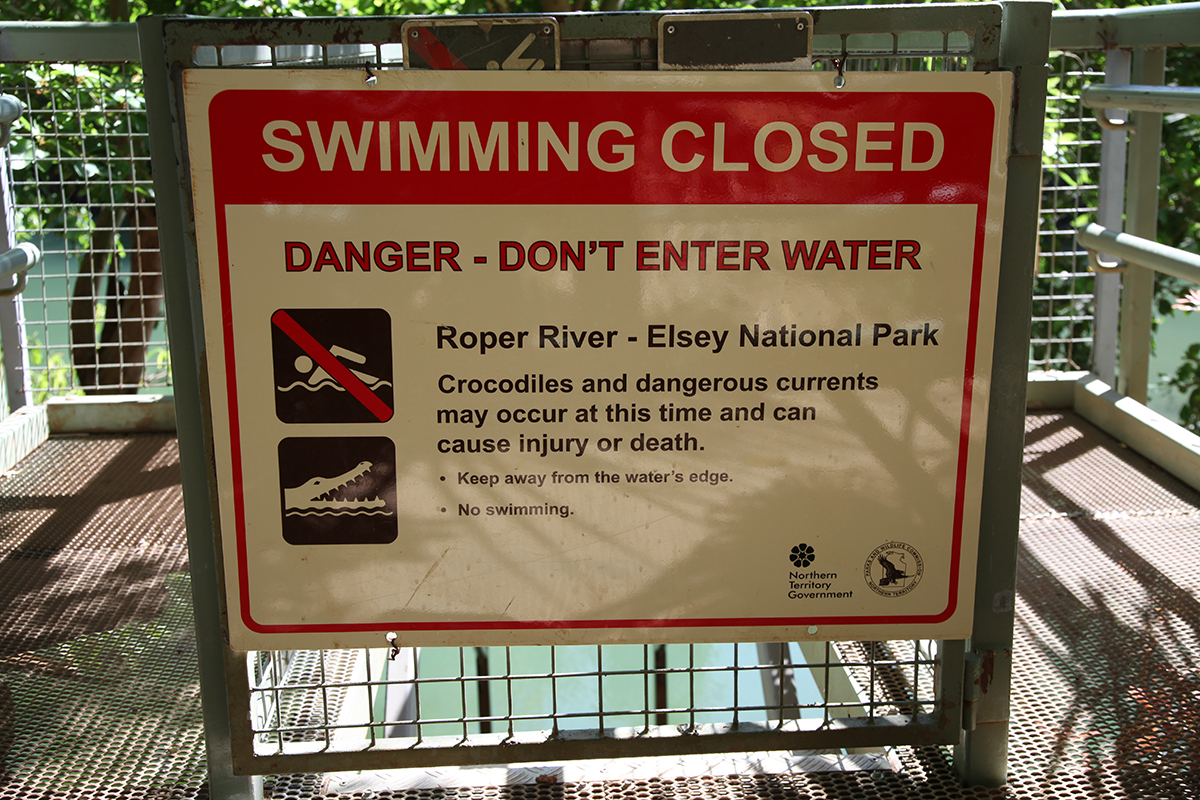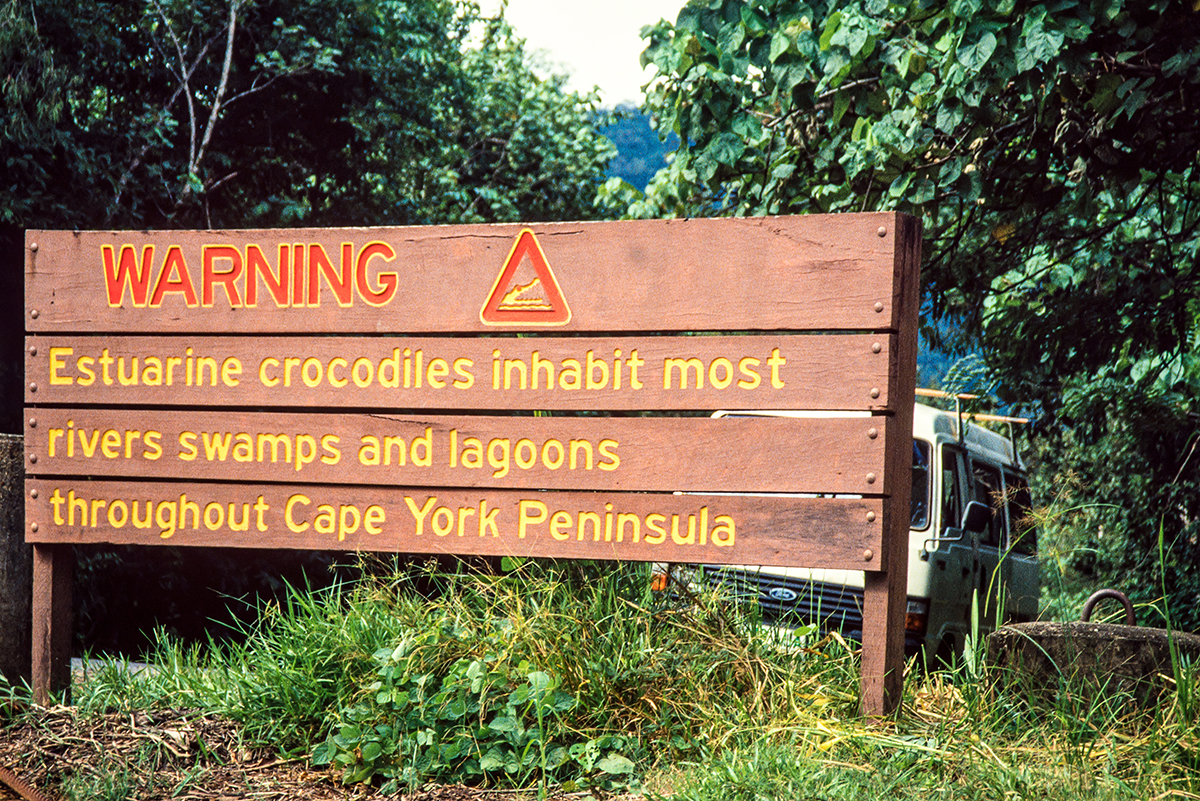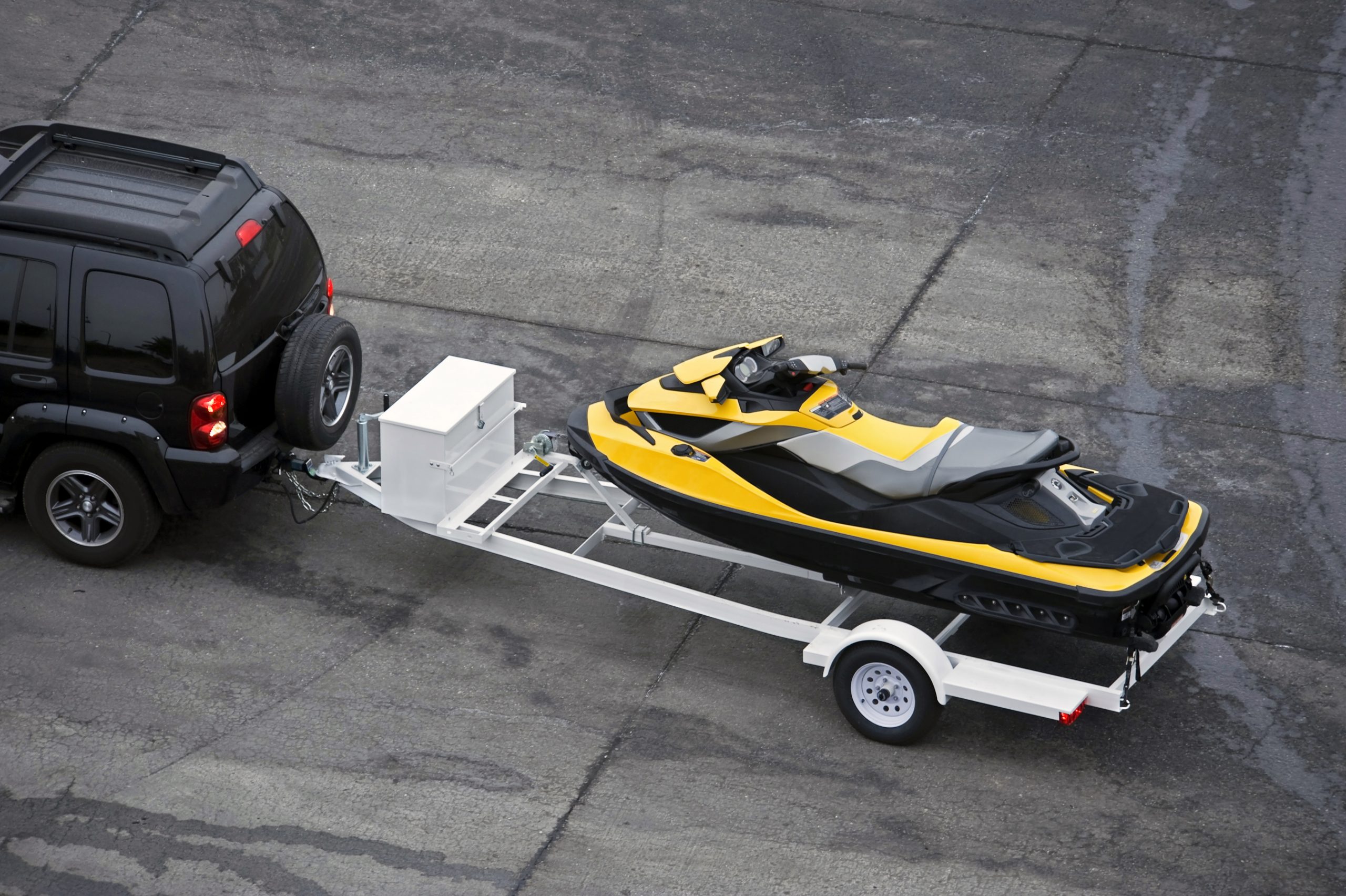In Australia, we can generally sit around a campfire safe in the knowledge we’re not at risk of an animal attack. There are no bears, lions, or wolves worry about. However, if you’re heading to northern Australia to escape the winter chill, you need to be croc-aware about our own native predators.
1. KNOW YOUR ‘ENEMY’

The saltwater crocodile is an ambush predator capable of swimming in bursts at 25-30km/h. The bigger adult males are 6m long and can weigh 1000kg (as long as a Hilux and as heavy as a camper trailer), whilst smaller adult females range from 2.7m long and weigh 100kg (as long as a kayak and as heavy as the tow bar on the front of your tow tug). The saltwater crocodile holds the record for the highest bite force ever recorded in any animal alive today.
2. KNOW WHERE THEY LIVE

Saltwater crocodiles live in estuarine areas and open ocean from Broome in Western Australia to the Burdikin River in Queensland. This area encompasses a lot of ground we overlanders love to travel.
Salties occupy the same bits of the ocean as tiger sharks, irukandji and box jellyfish. If that’s not enough reason to stay out of the water north of the Tropic of Capricorn, we don’t know what is!
Remember that flooding and storm activity can temporarily increase the mobility and distribution crocodiles. This means that crocs may be in places they don’t usually inhabit.
3. BE SMART AROUND WATER

‘Swimming Closed’ sign at one of the entry points of the Roper River in the Northern Territory’s Elsey National Park. If a saltwater crocodile enters an exclusion area, the area is closed for swimming, warning signs are installed and the public are notified. Only enter the water if you have a reasonable excuse, such as launching a boat. When in doubt, don’t swim where crocodiles may live, even if there is no warning sign present.
When fishing from the bank, always stand a few metres back from the water’s edge to give you some reaction time and to discourage an attack. And never stand on logs or branches overhanging the water. Don’t dangle your arms and legs over the side of the boat. They’ll look like a tasty snack to a croc.
4. THINK ABOUT WHERE YOU SET UP CAMP

Avoid camping in places where native animals and domestic stock drink. This is a natural feeding ground and ambush site. Camp at least 2m above the high water mark and at least 50m from the water’s edge.
Don’t leave food scraps, fish frames or bait at your campsite, and always check that previous campers have not left these behind. Never prepare food, or wash dishes near the water’s edge. And never clean fish around campsites or at boat ramps as crocs will be more likely to associate humans with food.
5. TAKE HEED OF WARNINGS

A signpost warning of the dangers of large saltwater crocodiles in the Northern territory of Australia. People are urged to exercise extreme caution around crocodiles as they have been responsible for a number of fatal attacks in recent years.
Obey crocodile warning signs. Swimming or standing in water above knee-height near a crocodile warning sign or where estuarine crocodiles are frequently seen, is illegal in protected areas.
MEET THE AUTHOR
Scott Heiman
Scott is an Environmental Scientist with 25 years combined service in the Army and AFP. He is the Managing Director and Principal Consultant for Heiman Habitat. Combining his skills and professional experience, Scott is a freelance writer and consultant focusing on issues relating to environmental management, bush-craft, remote area operations and camping.





